
By Scott J. Cope
I didn’t know it then, but my introduction to environmental education came during my childhood days in the mid-60s and early 70s. Those fond memories of when my grandfathers and dad rescued me from my urban Allentown rowhome to take me fishing and hunting in “the wilderness” with them remain integral to this day. Unbeknownst to me, those hands-on learning experiences were an introductory environmental education course at the most genuine and humblest level.
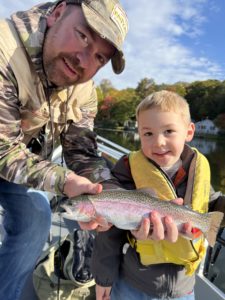
Preventing me from looking far beyond the other side of the stream or field was my innocence. Occasionally, I would look into the sky to curiously watch a hawk or turkey vulture soaring, but my primary focus was the task at hand – making sure the worm was firmly on the hook or quietly stalking the woods. I couldn’t see the future, yet I knew, I felt, this was something that I truly enjoyed, and maybe others should appreciate it too.
Fifty to sixty years ago, our core value of protecting the environment raised awareness of issues mainly focused on clean air and water, hence the Clean Air Act (1963) and Clean Water Act (1972). Prohibiting DDT and the removal of lead in paint, plumbing and gasoline were prominent in the 1970s as well. Today, climate change and the loss of open spaces are at the forefront of discussions. Arguably this was the beginning of “environmental education”. I admit that I had nothing to do with the actions of 50-60 years ago. Or did I?
Fast forward to the 21st century, and many of those notable areas, my “secret” spots, are now surrounded by residential and commercial development. For the record, I do not oppose appropriate development and I understand progress is necessary. However, I believe there can be, and should be, a balance. Even so, I often wonder why my “secret spots” are no longer so secret.
Simply put, environmental education comes in three types: formal, informal and one to be expressed shortly. Formal education takes place in our academic institutions and is typically taught by certified teachers and professors in the natural sciences, for example, biology and environmental science. Informal education can be offered by professionals working for non-profit organizations like nature centers and land trusts, and government agencies like the Department of Conservation and Natural Resources (DCNR) and conservation districts. There are too many others to list, yet the main objective of all is to introduce and raise awareness of our awesome environment.
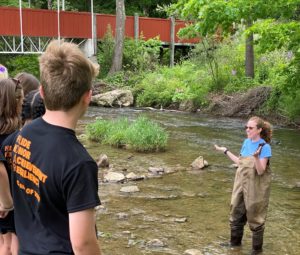
My current environmental education team at Wildlands Conservancy (www.wildlandspa.org) engages tens of thousands of people each year. These lessons are on different levels of the ladder of engagement and range from preschool children to seniors. They include everything from nature hikes to canoeing and biking, creek studies and live wildlife presentations, and birdwatching to edible plants.
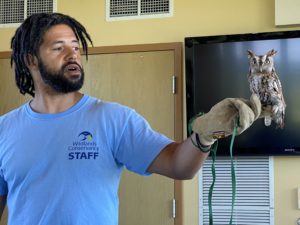
Our programs travel to schools, community parks, playgrounds, and businesses, and many, many people come to visit us at the Dorothy Rider Pool Wildlife Sanctuary. All our school programs align with the Pennsylvania Academic Standards and a few of our programs won awards. Our service area is 10 counties in the Lehigh River watershed.
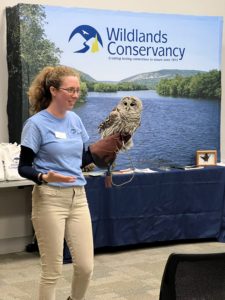
I am proud of the work, passion, and energy my team puts in every day for they are truly environmental educators. Me? Not so much.
I don’t have the teaching background they do, and quite honestly, I would rather watch and learn from them than satisfy any desire I might have to teach others in a formal setting. Plus, the skill set I developed over my 40+ year career can help them in other ways. However, I do at times think of myself as a mentor of nature, the environment, and the great outdoors, and that, in my humble opinion, is the third type of environmental educator.
For those of us without the appropriate teaching training and experience, we should be introducing and inspiring everyone willing to listen about the benefits of being in nature. Why not? It worked for me when I was just a kid and the same connections can be made for others that are introduced to hunting, fishing, hiking, paddling, wildlife viewing, and everything else nature offers us without an admission fee or a screen. And what I didn’t know then, and reflect on now, is that those experiences helped shape me into the conservationist I am today.
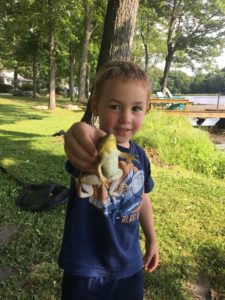
Some of the most gratification and laughs, I get are watching my grandkids trying to catch frogs, fishing, watching in amazement the hummingbirds at the feeder, climbing around on slippery rocks in the stream, turning over rocks searching for salamanders, imitating animal sounds, and yelling at the squirrels at the bird feeders. They are now at least the fifth generation of my family embracing nature.
In the end, environmental education, in my humble opinion, is the process of providing valuable opportunities that lead to respect and appreciation of our natural resources.
How we manage those experiences and expectations can be offered in a myriad of ways, yet regardless of your instructional proficiency, you can be the one to make a difference.
It is critically important that we all do our share to secure that what we appreciate remains intact in its natural state for future generations to witness too. Once it is lost it is gone forever.
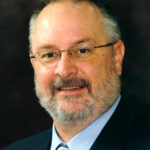 Scott J. Cope is currently the Vice President of Education with Wildlands Conservancy. He was previously employed by the PA Department of Conservation and Natural Resources (DCNR) and is a past president of the Pennsylvania Association of Environmental Educators (PAEE). His comments are not intended to necessarily represent those entities.
Scott J. Cope is currently the Vice President of Education with Wildlands Conservancy. He was previously employed by the PA Department of Conservation and Natural Resources (DCNR) and is a past president of the Pennsylvania Association of Environmental Educators (PAEE). His comments are not intended to necessarily represent those entities.




